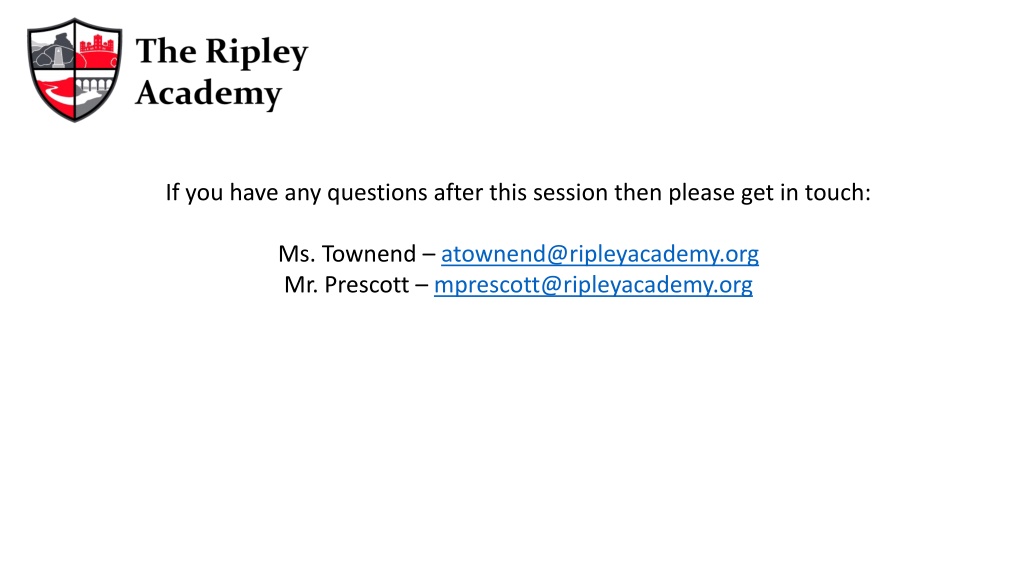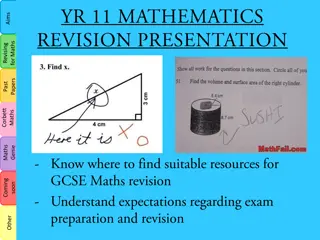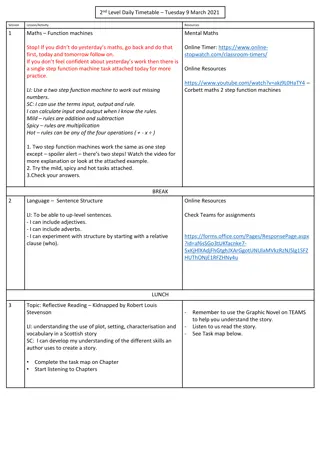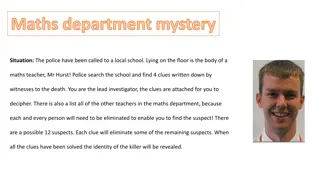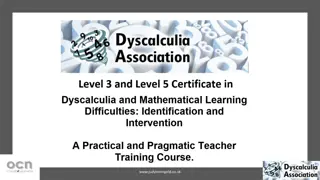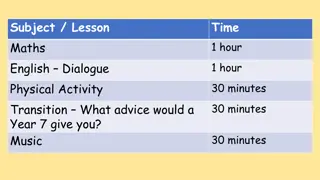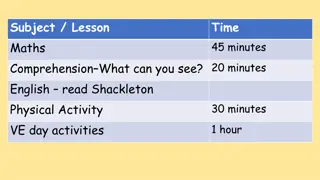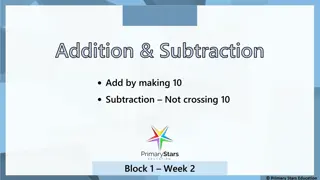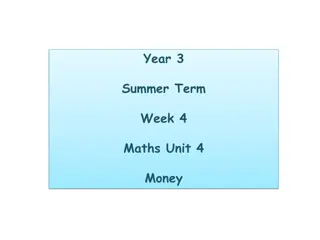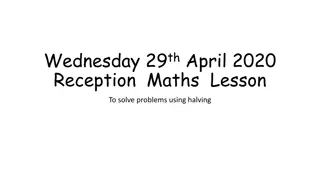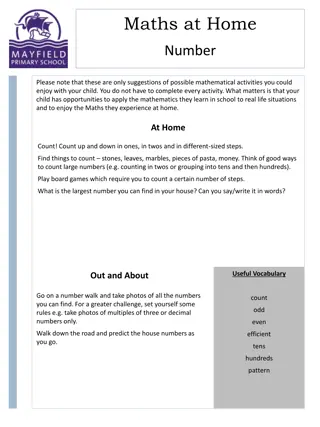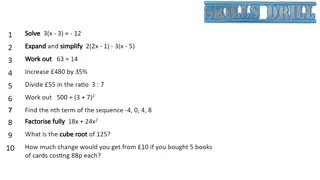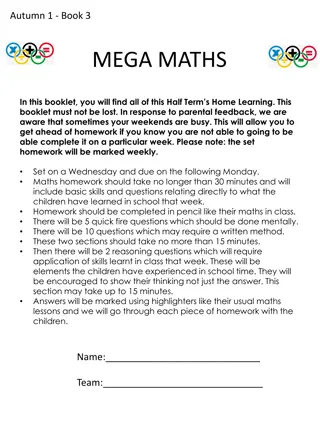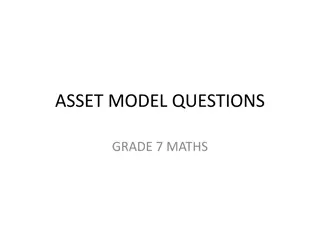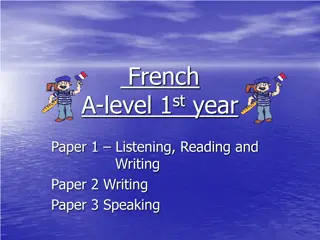A-Level Maths Overview and Study Resources
A comprehensive overview of A-Level Maths curriculum focusing on exam boards, assessment structure, recommended resources, and calculators. Includes insights into Mechanics and Statistics. Additionally, guidance on accessing supplementary learning materials and solving a math problem related to finding the gradient at a specific point on a graph.
Download Presentation

Please find below an Image/Link to download the presentation.
The content on the website is provided AS IS for your information and personal use only. It may not be sold, licensed, or shared on other websites without obtaining consent from the author. Download presentation by click this link. If you encounter any issues during the download, it is possible that the publisher has removed the file from their server.
E N D
Presentation Transcript
If you have any questions after this session then please get in touch: Ms. Townend atownend@ripleyacademy.org Mr. Prescott mprescott@ripleyacademy.org
A-Level Maths Overview Exam Board: AQA Assessed by examination at the end of Year 13 comprised of 3 papers: Paper 1 Pure 2 hours Paper 2 Pure and Mechanics 2 hours Paper 3 Pure and Statistics 2 hours Lots of trigonometry and algebra woop woop! Resources that we use: textbooks, exam question booklets, mymaths.com, drfrostmaths.com What you need: A calculator (more information on the next slide), stationery (pen, pencil, ruler etc.), resilience and perseverance.
Calculators Option 1: Casio fx - CG50 graphic calculator. All singing, all dancing - ideal if you are thinking of studying Further Maths or continuing your studies in Maths or Science at University. However, it is very expensive! Option 2: Casio 9750GIII graphic calculator. Cheaper than the one above, will draw graphs but has some limitations in the way it displays solutions (e.g. surds). Option 3: Casio fx - 991EX ClassWiz Advanced Scientific calculator. A cheaper alternative to a graphic calculator.
A bit more about the course What is Mechanics? Mechanics modelling the physics of the world around us e.g. at what angle should a cricketer aim to hit the ball in order to maximise the distance the ball will travel? Students planning careers in physics or engineering would find mechanics particularly useful.
A bit more about the course What is Statistics? Statistics collecting and analysing data and using this to make predictions about future events. e.g. actuaries study statistical information to calculate the risk of a driver of a certain age having a car accident. This information would be used by insurers in establishing the cost of the annual premiums. An actuary evaluates, manages and advises on financial risks. They use their knowledge of business and economics, together with their understanding of probability theory, statistics and investment theory, to provide strategic, commercial and financial advice.
Lets do some maths! Go to drfrost.com/join and type in the code: _______ Now let s learn something new
This is the graph of y = x2 Find the gradient of the tangent at x = 2.5. (3.2, 9.5) Gradient = change in y change in x Gradient = 9.5 1 3.2 1.4 (2.5, 6.25) x Gradient = 8.5 1.8 Gradient = 4.72 What is the problem with this? (1.4, 1) It is only an estimate!
This is the graph of y = x2 Find the gradient of the tangent at x = 2.5 From drawing a tangent we ve worked out that an estimate of the gradient is 4.72. (3.2, 9.5) (2.5, 6.25) x The actual gradient when x = 2.5 is 5 but how can we work this out exactly? (1.4, 1)
Lets look at smaller and smaller tangents x (3.5, 12.25) TANGENT 1 Gradient = change in y change in x Gradient = 12.25 6.25 3.5 2.5 (2.5, 6.25) x Gradient = 6 1 Gradient = 6
Lets look at smaller and smaller tangents TANGENT 2 (3, 9) x Gradient = change in y change in x Gradient = 9 6.25 3 2.5 (2.5, 6.25) x Gradient = 2.75 0.5 Gradient = 5.5
Lets look at smaller and smaller tangents TANGENT 3 Gradient = change in y change in x (2.7, 7.29) x Gradient = 7.29 6.25 2.7 2.5 x (2.5, 6.25) Gradient = 1.04 0.2 Gradient = 5.2
To summarise so far ?????? ?? ? ?????? ?? ?=?? By drawing tangents First Second Coordinate Gradient Coordinate ?? 12.25 6.25 3.5 2.5 9 6.25 3 2.5 7.29 6.25 2.7 2.5 x1 = 2.5 y1 = 6.25 x1 = 2.5 y1 = 6.25 x1 = 2.5 y1 = 6.25 x2 = 3.5 y2 = 12.25 x2 = 3 y2 = 9 x2 = 2.7 y2 = 7.29 Tangent 1 6 Tangent 2 5.5 Tangent 3 5.2 The gradient is getting closer and closer to 5 Now lets think more generally
Now lets think more generally Pick any point the curve y = x2. (x+h, (x+h)2)x ?2 ? It will have coordinates ( , ) Go a bit further along the curve and plot a second point. ? + (? + )2 It will have the coordinates ( , ) (? + )2 ?2 ? + ? ? ?= So the gradient will be: (x, x2) x h =?2+ 2? + 2 ?2 ? + ? =2? + 2 = 2? +
Now lets think more generally (x+h, (x+h)2)x But you could choose a point that was closer and closer to your original one. So would be getting smaller and smaller (so small that it can be considered negligible!) So lim 0 2? + = 2? (x, x2) This means the limit as h approaches 0 x h Therefore, the gradient of the curve y = x2 at any point is given by: 2? and so the gradient when ? = 2.5 will be: 2 2.5 = ? ? = 3? 6 ? = 4? 8 ? = 5.2? 10.4 What would the gradient be if:
Now lets generalise further Function Gradient Function ? = 3?2 ? = ?3 ? = 4?3+ 3?2 ? = ?4+ ?3 ? = 12?2 ? = 4?3 ? = 8? 5 ? = 2? 4 ? = 15?4+ 4? 3 ? = 3?5 2? 2+ 2 Can anyone spot what s happening? bring the power down subtract one away from the power So to find a gradient function you This is called DIFFERENTIATION
Multiple Choice Questions: Multiple Choice Questions: Don t worry about getting it wrong Just have a go!
A: ?3 Differentiate ? = ?4 B: 3?4 C: 4? D: 4?3
A: ?2+ ? Differentiate ? = 2?3+ ?2+ 5 B: 6?2+ 2? C: 2?2+ 2? D: 6?2+ 2? + 5
A: 4? + 4 Differentiate ? = 2?2+ 4? B: 4?2+ 4 C: 4? + 4? D: 2? + 4
Hence, find the gradient at ? = 0 ? = 2?2+ 4? A: 0 B: 8 ? ?= 4? + 4 C: 4 D: 6
A: 15?2 8?1 Differentiate ? = 5?3 4? 2 B: 15?2+ 8? 1 C: 15?2 8? 3 D: 15?2+ 8? 3
Find the gradient when ? = 1 ? = ?3 A: 3 B: -3 C: 1 D: -1 HINT: think about what you might need to do first?
A: 2(3 + 0) Differentiate ? = 2? 3? + 4 B: 12? + 8 C: 12? + 6 D: 10? + 8 HINT: think about what you might need to do first?
Hence, find the gradient when ? = 1 ? = 2? 3? + 4 A: 8 B: 12 ? ?= 12? + 8 C: 20 D: 14
EXAM EXAM- -STYLE QUESTION: STYLE QUESTION: The points ? and ? lie on the curve ? = 2?3+ ?2 18? + 2 The gradient at both ? and ? is 2. Find the coordinates of ? and ?. (6 marks)
EXAM-STYLE QUESTION: SOLUTION The points ? and ? lie on the curve ? = 2?3+ ?2 18? + 2 The gradient at both ? and ? is 2. Find the coordinates of ? and ?. (6 marks) First we need to differentiate: ? ?= 6?2+ 2? 18 Then set this equal to 2: 6?2+ 2? 18 = 2 Rearrange and solve the quadratic: 6?2+ 2? 20 = 0 3?2+ ? 10 = 0 3? 5 ? + 2 = 0 ? =5 3 ??? ? = 2 To find the coordinates we need to substitute our values of x into the original equation to find the values of y: 5 3 3 2 23+ 22 18 2 + 2 = 26 So our coordinates for ? and ? are: 5 3, 431 27 3 2 5 5 3 + 2 = 431 2 + 18 27 ??? 2,26
